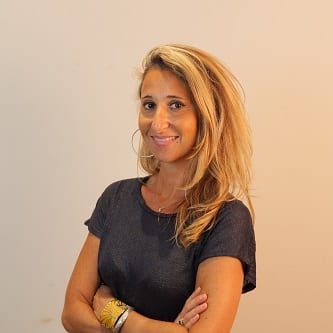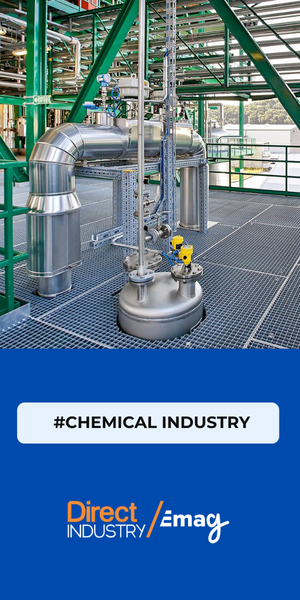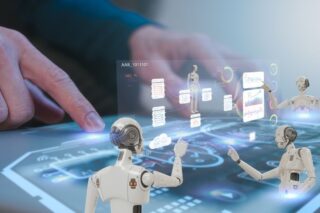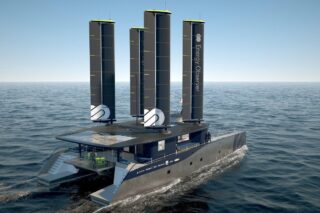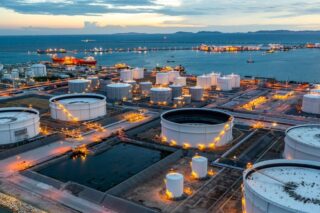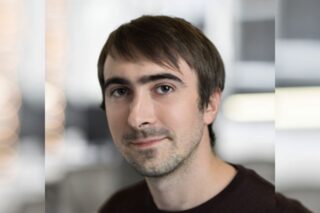The explosive rise of generative AI is transforming the global data chain and forcing a radical overhaul of digital infrastructure. Digital Realty, a global data center giant, finds itself at the heart of this new industrial revolution. Surging electrical demands per rack, cooling innovations, European regulatory pressure, grid connection challenges, record-breaking investments… Three years after our previous interview, Fabrice Coquio, President of Digital Realty in France, talks about a rapidly evolving industry where AI is no longer a promise—it’s a technical, energy, and strategic shock.
When we interviewed you three years ago, you emphasized global connectivity and Marseille becoming the 7th internet hub worldwide. Today, Marseille is 6th and generative AI dominates the conversation. What does this mean in practical terms for a data center?
Fabrice Coquio: “It’s a new wave on top of all the others we’ve been managing for years: enterprise outsourcing, cloud, cybersecurity, connectivity… A hub isn’t declared, it’s built through data exchanges—and now, through data manufacturing. And contrary to popular belief, AI didn’t start with ChatGPT: some clients were running AI models with us long before.”
The real game-changer is generative AI, though?
Fabrice Coquio: “Yes, it accelerates use cases, but what matters are concrete applications for businesses: augmenting services, increasing productivity… not just replacing a search engine with a prompt. Technically, the main challenge is electrical and thermal. Running AI—any model—requires GPUs from Nvidia or others, which demand exponentially higher electrical density per rack. Twenty years ago, racks consumed 2–7 kW; today, AI racks use 70, 80, sometimes 100 kW. That’s enormous.”
What does this mean for your data centers?
Fabrice Coquio: “This means a complete redesign. We need to handle ten times the power per rack and rethink cooling. We now use Direct Liquid Cooling (DLC), circulating water directly through servers to cool processors. We no longer cool rooms; we cool the components themselves. This requires specific architectures and new equipment (DCUs, dedicated water loops…). If your data center wasn’t designed for this, you simply can’t adapt to it.”
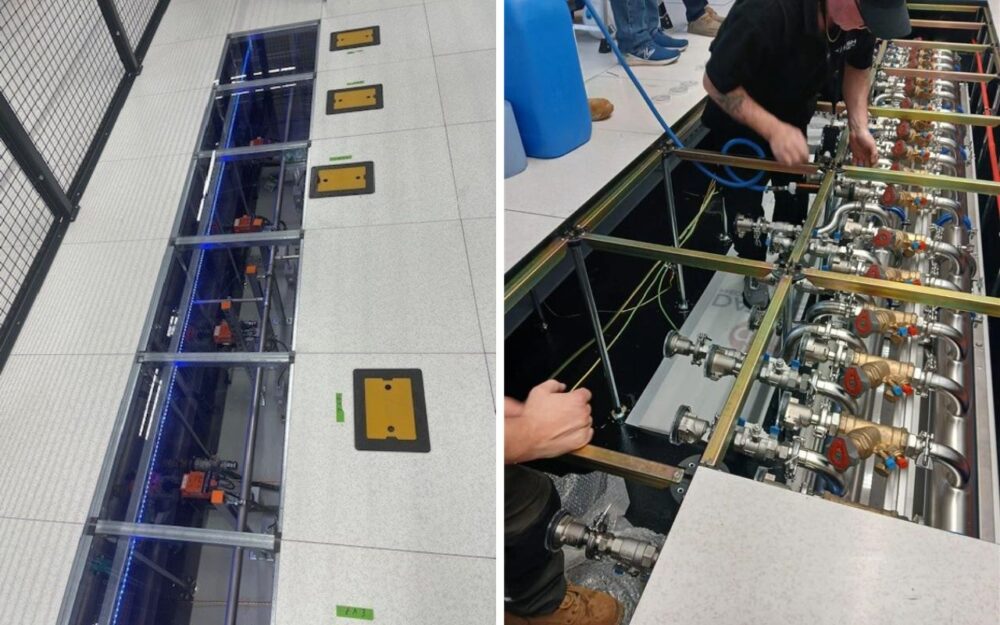

Were your infrastructures ready in 2022, when generative AI emerged?
Fabrice Coquio: “Yes. At La Courneuve [Paris region], we had already pre-installed DLC solutions. These are multi-million euro investments. Today, 80% of our global data centers have been converted. But not all data centers can handle AI.”
Should we fear accelerated obsolescence of data centers then?
Fabrice Coquio: “Yes. European regulations on energy efficiency and water usage are extremely strict. As a result, 80% of French data centers will be obsolete by 2030. Even with technology and funding, some buildings simply cannot achieve the required PUE (Power Usage Effectiveness). In Marseille, our buildings have a PUE below 1.3. Globally, we are building 32 new data centers to meet these standards.”
Europe seems ahead of the rest of the world?
Fabrice Coquio: “Clearly. It’s positive, but Europe is moving alone, creating a global imbalance.”
With AI expansion, should we expect more compact machines?
Fabrice Coquio: “Density and computing power per processor keep increasing—Moore’s Law. But total demand is also growing 20–30% annually. Even if we cram 100 kW per rack, we still need thousands of square meters. That explains why data center infrastructure in France, especially in Paris and Marseille, grows at 20–30% per year.”
Read Also
How do you manage AI’s high energy consumption? AI is known for being energy-hungry, and a recent Shift Project report called out the sector for it.
Fabrice Coquio: “There are two issues: absolute consumption (mainly client machines) and efficiency, the energy used by the infrastructure itself. Our French data centers consumed 400 GWh/year in 2022, now 750 GWh. It’s client-driven, not us. But we improve PUE, reducing it by 2–3% per year on average.”
Do you impose limits on clients?
Fabrice Coquio: “No. We don’t tell Mistral AI to ‘use less.’ We enforce rules to maintain efficiency. Consumption increases don’t mean no efficiency effort. Plus, France exports electricity.”
For the moment…The Shift Project points out in its report the case of Ireland, where a moratorium had to be imposed, banning any new data center construction due to the risk of insufficient electricity supply.
Fabrice Coquio: “According to RTE forecasts, we have at least two decades of energy supply. Besides, France has the least carbon-intensive electricity in Europe after Norway and Sweden. So it’s better to build infrastructure in France than in Poland! The real constraint, though, is grid connection.”
What do you mean?
Fabrice Coquio: “The challenge isn’t producing electricity, it’s connecting new projects to the network. In Europe, grid transport and distribution are managed by public operators (RTE and Enedis). There’s often a mismatch between where people want to consume energy and where connection capacity exists. Even if a source is available elsewhere, if everyone wants Paris or Marseille, the local network isn’t ready.
Second, reinforcing the grid requires time and investment. Installing lines, transformers, and other equipment for solar plants, electric buses, or data centers can take years, particularly with supply chain delays. Connecting a 100–300 MW site can take much longer than expected—not for technical reasons, but because the grid isn’t ready.”
Does Europe lack long-term planning compared to, for example, nuclear projects?
Fabrice Coquio: “Yes. The sector has been warning governments and RTE/Enedis for years: growth isn’t 1–2%, it’s 20–30%. Today’s 30–40 MW connections will soon be 100–200 MW, and by 2035 we’ll need 400 MW. Europe has largely ignored these signals. France is finally acting, but comprehensive planning is still lacking. It’s not just grid connections: EU rules require heat recovery networks, which take 8 years to build. Data centers now require dozens of hectares; by 2035, 40–50 hectares. Long-term planning is essential.”
Could SMRs (small modular reactors) help?
Fabrice Coquio: “Technically, it’s possible, but there’s nothing new. SMRs have been used in submarines for 40 years. The challenge is societal: transparency, acceptability, and location.”
The AI sector is booming, but many are talking about a bubble. If that bubble bursts, could your data centers end up empty?
Fabrice Coquio: “No. We don’t build AI factories for a single client that might disappear. Our model is hubs where companies interact and share infrastructure. Inference centers use and commercialize AI models for real clients. Without demand, these models wouldn’t survive.
Our clients are banks, insurance, manufacturing, services, and global tech players. Neo-clouds are new entrants; some will fail, some will succeed. That’s why we plan 20–25 years ahead and focus on flexibility. AI growth isn’t linear—there will be oscillations, but the trend is upward. This approach protects our investments.”
Could “frugal AI” threaten your business?
Fabrice Coquio: “Not at all. Frugal AI has existed for years (e.g., MBDA missiles). We continue to deploy multi-megawatt cloud, storage, and connectivity infrastructure. The real growth driver isn’t AI itself—it’s data creation. AI processes data; it doesn’t generate it. Data grows at 130% per year, 80% produced by businesses. Some say more data was created in 2024 than in all previous human history. True or not, the phenomenon is real and unstoppable.”
How much of your activity is AI-related today?
Fabrice Coquio: “Significant. Out of 6,000 global clients, 20 major players (US and Chinese) account for 60% of AI orders. Neo-clouds like Mistral, CoreWeave, Nebius, and traditional enterprises also invest heavily. For example, we spent over €400 million for four data centers in Marseille; currently, we are building two in parallel for €1 billion. AI adoption is accelerating our infrastructure needs.”
How does AI impact your revenue?
Fabrice Coquio: “Our public results show unprecedented growth over the past four years. AI is a major driver, but not the only one. It’s one wave in a larger, accelerating trend.”
Read also

